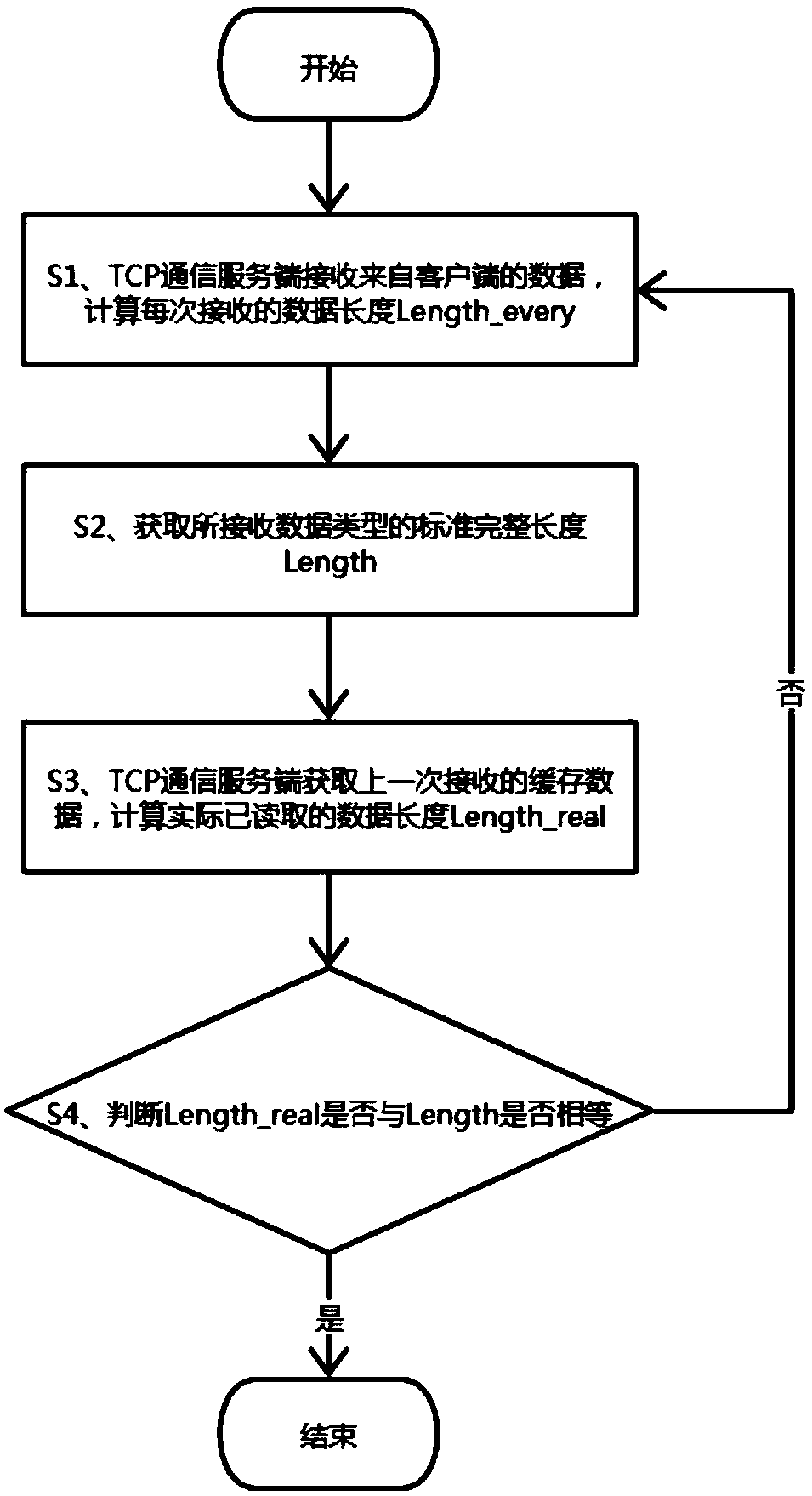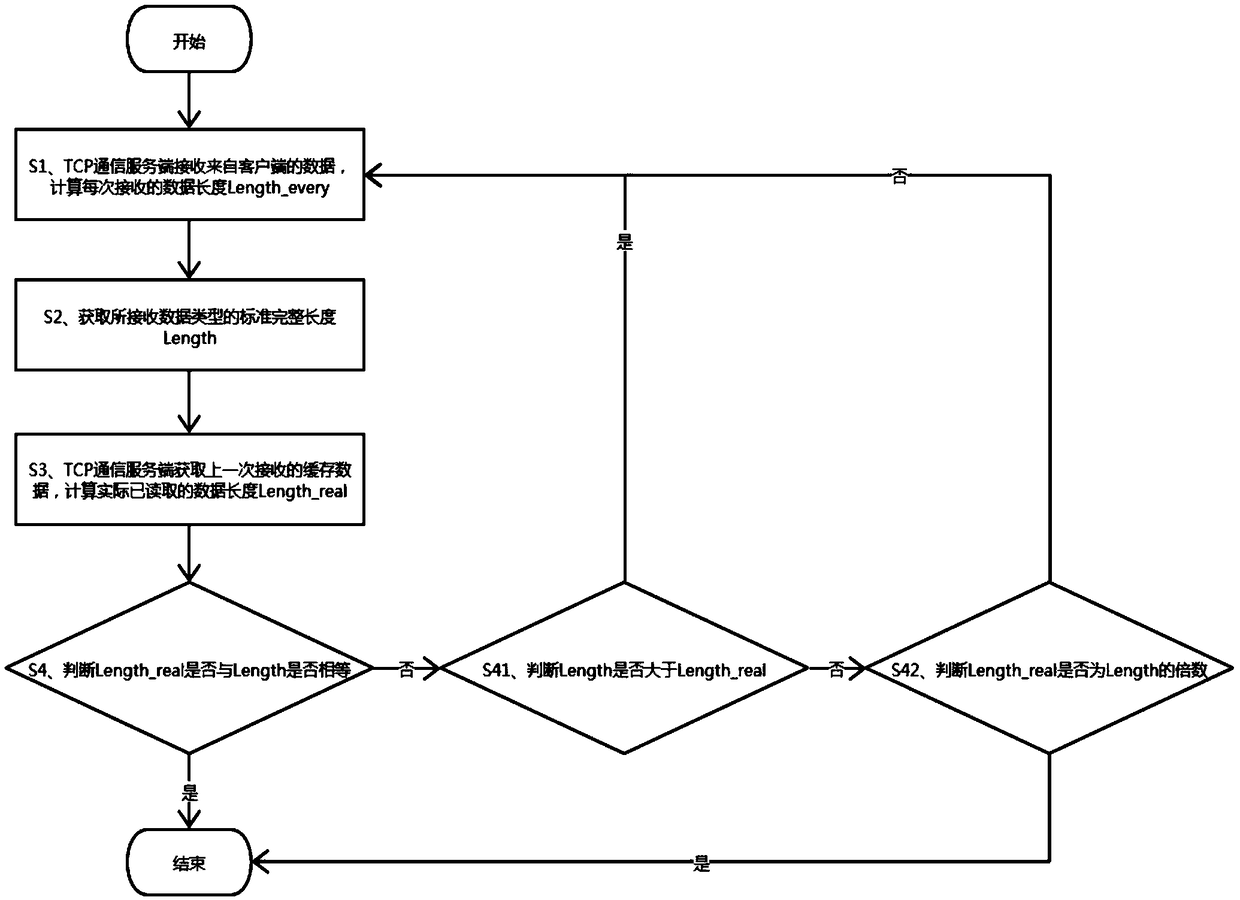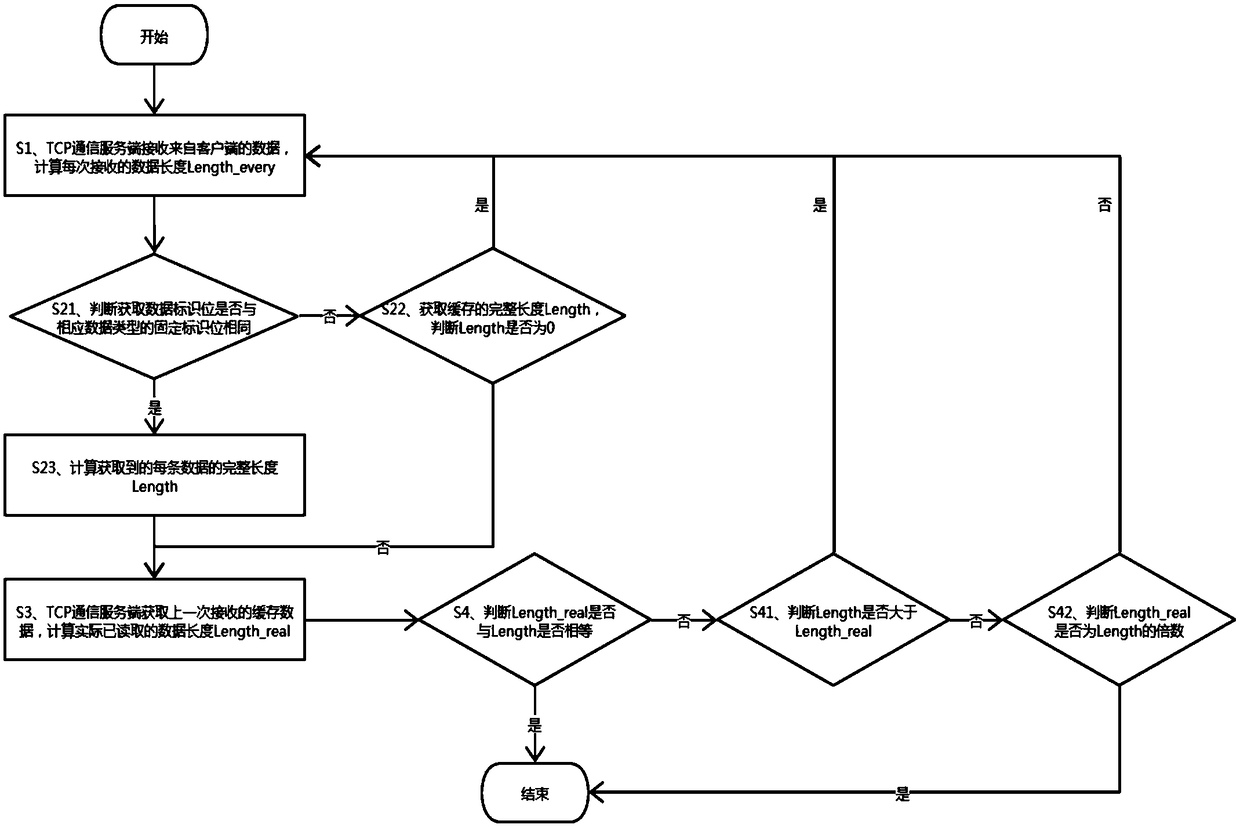TCP-based data subcontracting and sticking processing method
A technology of protocol data and processing method, applied in the field of data transmission, can solve the problem that the receiver cannot restore the data packet, etc., and achieve the effect of wide application range
- Summary
- Abstract
- Description
- Claims
- Application Information
AI Technical Summary
Problems solved by technology
Method used
Image
Examples
Embodiment 1
[0027] refer to figure 1 , the present invention provides a kind of processing method based on TCP protocol data packet, comprising the following steps:
[0028] S1. The TCP communication server receives the data from the client, and calculates the Length_every of the received data each time.
[0029] The TCP communication server performs real-time data transmission interaction with the client, and calculates the length Length_every of the received data each time it receives data.
[0030] S2. The TCP communication server acquires the standard complete length Length of the received data type.
[0031] The standard complete length Length of various data types transmitted by the TCP communication server and the client during data interaction is stored in advance according to the data type, and the TCP communication server obtains the received data from the database after receiving the data uploaded by the client The standard full length of the type Length.
[0032] S3. The TC...
Embodiment 2
[0040] refer to figure 2 The present embodiment provides a method for processing data packet stickiness based on the TCP protocol. The difference from Embodiment 1 is that it also solves the problem of sticky packets of data during data transmission through the TCP protocol, which specifically includes the following steps:
[0041] S1. The TCP communication server receives the data from the client, and calculates the Length_every of the received data each time.
[0042] S2. The TCP communication server acquires the standard complete length Length of the received data type.
[0043] S3. The TCP communication server obtains the cached data received last time. If the cached data is obtained, the Length_real of the actually read data length is calculated; if the cached data is not obtained, the Length_real is assigned a value of 0.
[0044] S4. Determine whether the actually read data length Length_real is equal to the standard complete length Length of the received data type. ...
Embodiment 3
[0050] refer to image 3 , a processing method based on TCP protocol data packet sticking provided by this embodiment is different from Embodiments 1 and 2 in that it can process the received packets and sticky packets of various data types of different lengths , including the following steps:
[0051] S1. The TCP communication server receives the data from the client, and calculates the Length_every of the received data each time.
[0052] S21. Set corresponding fixed identification bits for different types of data to identify their lengths. When the TCP communication server receives data from the client each time, it also identifies the identification bits of the acquired data to determine whether it is consistent with the corresponding data type. The identification bits are the same, if they are not the same, then step S22 is executed; if they are the same, then step S23 is executed.
[0053] S22. Obtain the full length of the buffer, Length, and determine whether the Len...
PUM
 Login to View More
Login to View More Abstract
Description
Claims
Application Information
 Login to View More
Login to View More - R&D
- Intellectual Property
- Life Sciences
- Materials
- Tech Scout
- Unparalleled Data Quality
- Higher Quality Content
- 60% Fewer Hallucinations
Browse by: Latest US Patents, China's latest patents, Technical Efficacy Thesaurus, Application Domain, Technology Topic, Popular Technical Reports.
© 2025 PatSnap. All rights reserved.Legal|Privacy policy|Modern Slavery Act Transparency Statement|Sitemap|About US| Contact US: help@patsnap.com



